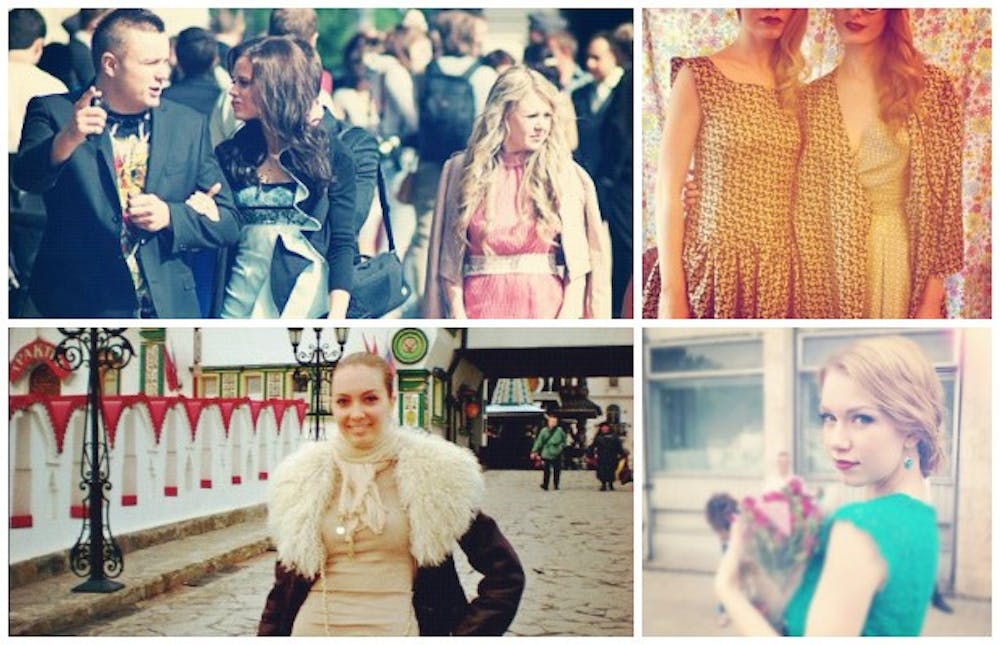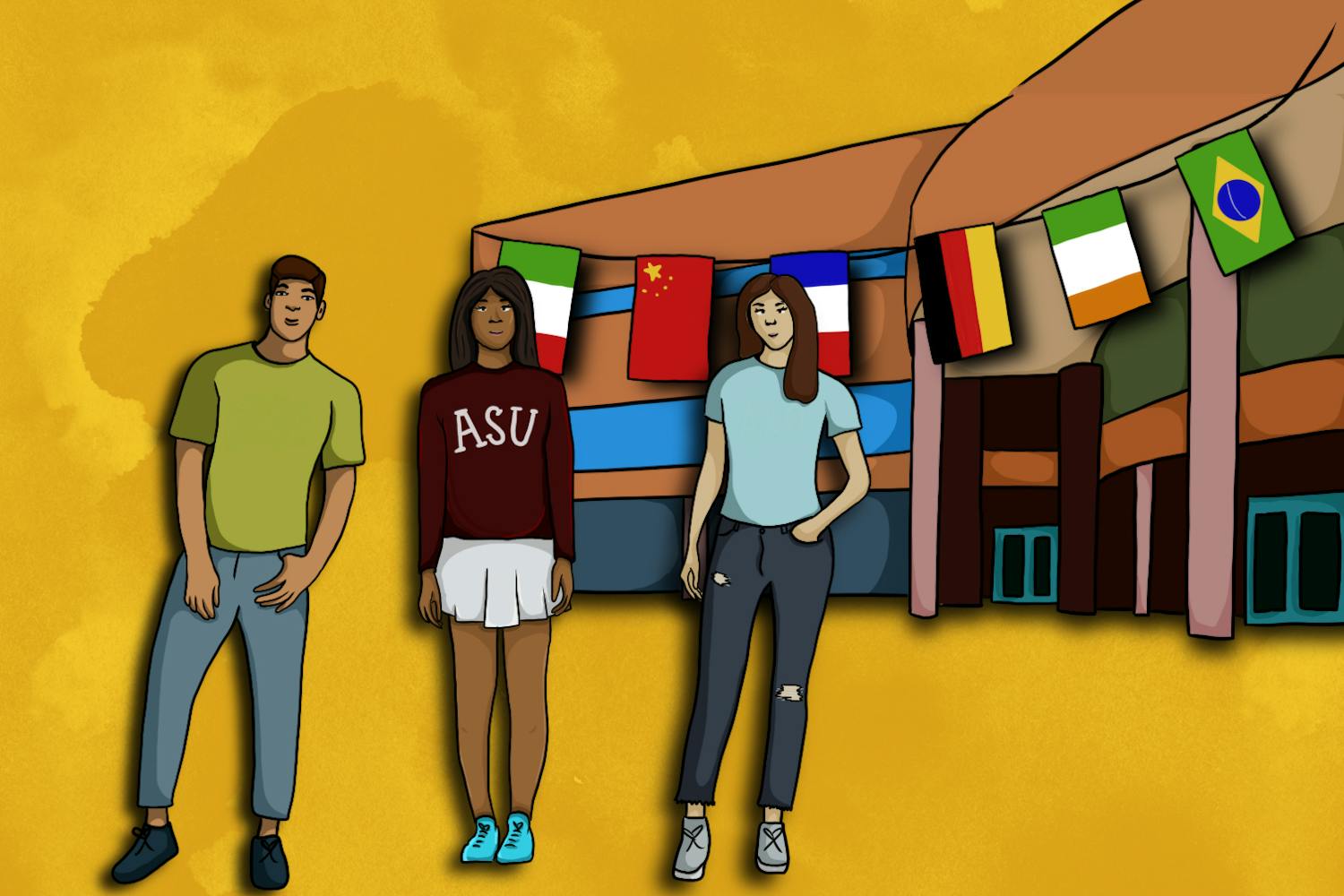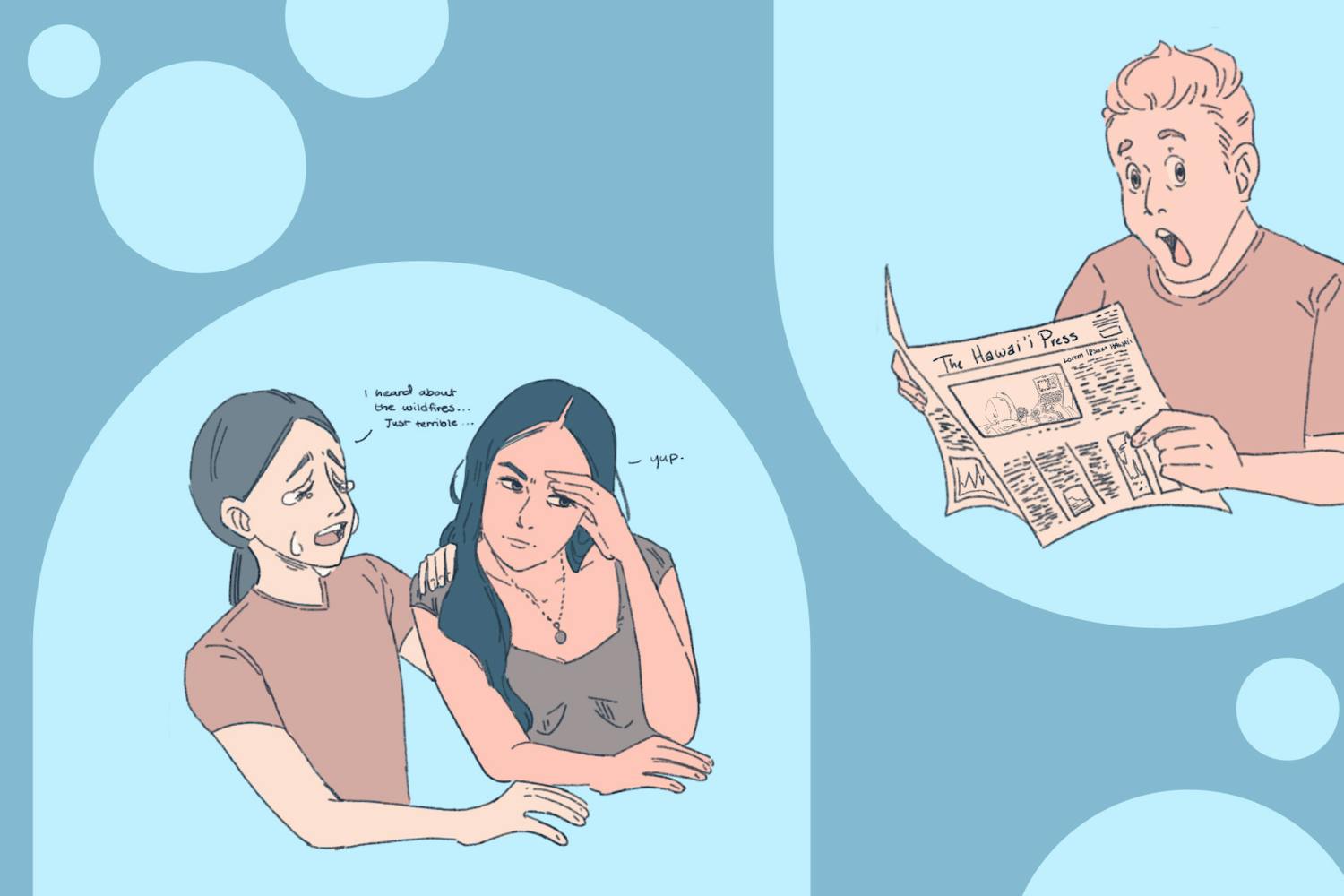When I first arrived in Moscow in 2010 to study Russian, I was struck with curiosity about the backwards world in which I had landed. Comparable to neither Europe nor Asia, the barely 20-year-old Russian Federation had embraced the difficult transition to capitalism with great enthusiasm and an eagerness rarely seen in countries recovering from economic depression. For me, the most striking aspect of this radical transformation was not the endless sea of advertisements, nor the comforting sight of Starbucks on a street corner — it was the evolution of fashion sense.
 Russia's upscale fashion is a stark contrast with the more relaxed styles around campus.
Russia's upscale fashion is a stark contrast with the more relaxed styles around campus.Photo by Bryce Cashman
Since the end of the Soviet Union, and the opening of Russia’s doors to the world, Russians have been characterized as trend-followers and fad-lovers, although they normally fall a decade or two behind the West on anything and everything related to pop culture.
A couple years ago, during that first adventure in Russia, a stroll down the street in Moscow was not unlike stepping into a John Hughes film. Mullets, bright teal and pink windbreakers, studded leather jackets, high-waist shorts, an exorbitant amount of denim, tracksuits, and spandex hurled me back in time to the tune of a Depeche Mode song.
Some of my dearest friends sported this style with pride and in the total belief they were up to date with the latest American trends. I lacked the audacity to tell them they were 25 years behind, and at times, I inexplicably felt the urge to join this retro scene.
It was the ‘80s – and it was good, although short-lived.
In 2012, I returned to find that the “John Hughes Russia” I had come to know and love had all but diminished. Today, the youth of Russia have moved in a different direction, gathering an interesting mix of traditional and modern styles.
Mullets are out, thank god.
Fashion has become a religion for most Russians (especially the wealthy), and when it comes to purchasing new threads, the term “splurge” does not compute. I found myself accompanying friends on daily shopping sprees in stores I would never enter in America. Hugo Boss, Dolce & Gabbana, Steve Madden and Tom Ford abound in Russia — and for a fraction of American and European costs.
As we scoured the Moscow shops and coffeehouses, dressed in the highest of Russian fashion, I felt a sense of deep inclusion in the entourage of stilyagi. Stilyagi (Russian for dandy, or stylish) was a slanderous label applied to a subculture of young people in the Soviet Union from the early ‘50s to the late ‘60s. Stilyagi had become a way of life for me, and it had opened my eyes to the world of fashion.
Bright colors, a primarily minimalist style, and a touch of retrospect are all key features for the new stilyagi of Russian fashion.
I noticed that modern Russian women of all ages love to implement the color red in their outfits. These stylish garments traditionally utilize red to its extent with materials like leather, wool, fur and even canvas. The Russian word for the color red — krasnaya — can also mean “beautiful.” This alternative meaning for the word explains the Russian woman’s obsession with red and the implication that fashion is rooted in language.
But it’s not just color — it’s history.
The leading designers from Russian fashion hubs like Moscow and St. Petersburg are also reinventing the style of their country using remnants of old traditions.
A reflection of this nostalgic movement is the accordion skirt. Originally the hallmark of peasant women’s attire in pre-Industrial Russia (17th – 19thCentury), this elegant piece has been adapted to the modern trend.
Women’s attire in this period could also include an elaborate dress called a sarafan, complete with a long, flowing skirt. Sarafans were easy to move around in for the working woman of that era, and often modeled detailed floral embroidery and bright colors. Today, Russian women still flaunt the same style as their ancestors, but with an edgy twist.
My female friends in Russia incorporated these styles on a daily basis, whereas in America I could not expect girls to put so much thought into the retro look. And their devotion to this fashion circumvented any weather.
Style is everything to the young people of Russia. Women will dress up to go to the grocery store, and men will put on their best outfit for a weekend lunch. When classes are in session, students flaunt their styles as if they were walking a show at New York Fashion Week.
Most foreigners hold the predisposition that it's freezing year-round in Russia. Hence, fur is law. Any Russian wardrobe — men's or women's — is incomplete with out a stylish shuba (fur coat). Characteristics of this peasant style included a heavy emphasis on warmth; whereas today, form and function coincide.
It was refreshing to see the law of fur placed in such high value as a part of Russian culture and past. Today, the American people seldom place such an emphasis on their sartorial heritage.
I can say with complete and utter honesty that culture shock was not a problem for me during my return to Russia this past summer. While I knew the people, the places and the language, I most importantly knew the law of the various social rings that I affiliated myself with — fashion sense.
To me, the term “culture shock” is almost paradoxical, since the only time I ever felt it was when I returned to America, and more specifically, to ASU in Tempe.
Fashion sense is not given the same weight here, which makes it difficult for me to hold on to the values of style instilled in me by my colleagues and friends in the East. I pray that the Russian people will not catch wind of the relaxed trends of our student body like the trademark flannel pajama pants, cargo shorts and the ever-ubiquitous “bro-tank” — because they will assuredly run with it.
Contact the writer at bcashman@asu.edu or via Twitter @BryceCashman






